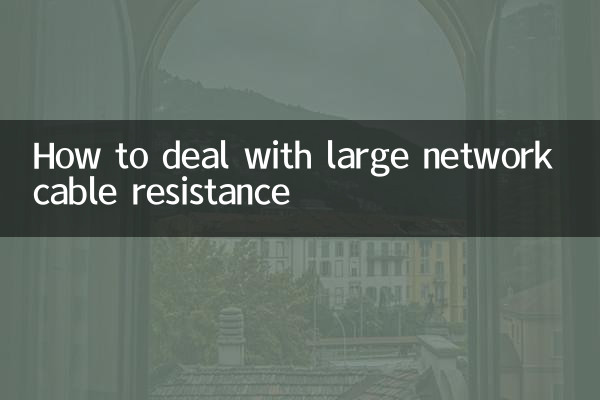How to deal with large network cable resistance
In home or enterprise networks, excessive network cable resistance will cause network signal attenuation, transmission speed drops, or even connection interruptions. This article will analyze the reasons, detection methods and solutions for large network cable resistance, and provide relevant data for reference.
1. Common reasons for large network cable resistance

Anomalies in the cable resistance are usually caused by the following factors:
| Cause Type | Specific instructions |
|---|---|
| Poor wire quality | Use non-standard copper core or inferior outsourcing materials |
| Too long cable | Standard transmission distance exceeding 100 meters |
| Connector oxidation | Rust of metal contacts of crystal head |
| Physical damage | Bending and extrusion cause conductor deformation |
2. Resistance detection method and standard value
Pay attention to when measuring with a multimeter:
| Testing items | Standard value (20℃) | Exception threshold |
|---|---|---|
| Single wire resistance | ≤9.38Ω/100m | >12Ω/100m |
| Twisted pair loop resistor | ≤18.76Ω/100m | >25Ω/100m |
| Shielding resistance | ≤14Ω/km | >20Ω/km |
3. Processing plan and implementation steps
The following measures can be taken for different situations:
1.Replace high-quality wire
Choose CAT5e or CAT6 cables that meet TIA/EIA-568 standards, and the copper core diameter should be ≥0.5mm. Priority will be given to well-known brands such as Amp and CommScope.
2.Optimize the wiring structure
| Improvement measures | Improved results |
|---|---|
| Shorten the transmission distance | For every 10 meters reduction, the resistance decreases by about 0.9Ω |
| Reduce intermediate joints | Add 1-3Ω resistance to each unqualified connector |
| Avoid parallel walking lines | Reduce the equivalent resistance caused by electromagnetic interference |
3.Professional maintenance method
• Full channel testing using a dedicated network tester such as Fluke DSX-5000
• Regularly clean the crystal head contacts, and it is recommended to check them every 6 months
• Severe oxidation joints need to be re-crimped, and using gold-plated crystal heads can reduce contact resistance by 30%
4. Preventive measures
1. Reserve 10% length margin when installing new lines to avoid excessive stretching
2. PE outer skin waterproof cable should be used in humid environments
3. It is recommended to use fiber instead of copper cable for important links
5. Comparison of technical parameters
| Cable type | Typical resistance (Ω/100m) | Maximum transmission distance |
|---|---|---|
| CAT5e | 9.38 | 100m |
| CAT6 | 7.01 | 100m |
| CAT6A | 6.25 | 100m |
Through the above measures, the network cable resistance can be effectively reduced and network transmission quality can be improved. It is recommended to conduct routine testing every quarter to promptly detect and deal with potential problems.

check the details

check the details